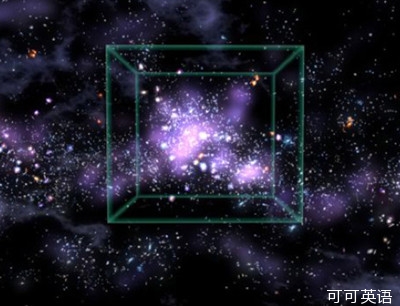How did big galaxies get so big? A rare glimpse at a primordial galaxy undergoing a growth spurt may provide some answers.
銀河為什么會變得如此巨大?科學家觀察到一個原始星系的急劇膨脹,這次罕見的觀測也許能提供答案。
The galaxy Himiko is named for a Japanese queen of the third century AD. Researchers peered into the galaxy using both the Hubble Space Telescope and the newly inaugurated ALMA telescope array in Chile. The galaxy is so distant that astronomers see it as it appeared just 800 million years after the big bang, when the universe was only about six percent of its present age.

Himiko 星系是以日本公元三世紀的女王命名。研究人員利用哈勃望遠鏡以及在智力新投入使用的阿爾瑪望遠鏡陣列來觀測此星系。它的距離如此遙遠以至于天文學家判斷它是大爆炸之后8億年才出現的星系,當時宇宙只有目前年齡的6%。
At that early epoch, Himiko was already making new stars at a vigorous clip of about 100 per Earth year. The burst of star formation may be powered by a merger of three smaller galaxies—the detailed new observations show that Himiko is not one homogenous blob but three separate luminous clumps. The research has been submitted to the Astrophysical Journal.
在早期的時代,Himiko 就已經以有力的步伐(每年100顆的速度)制造新恒星。行星爆炸式形成的驅動力可能來自于3個較小星系的合并——詳細的研究證明 Himiko 并不是單一的發光體,而是三個獨立的發光團。這項研究發表在《天體物理學雜志》上。
The researchers say that their observations offer the first clear glimpse at how the most massive galaxies took shape, way back when the earliest stars and galaxies were lighting up the universe. And that should prove to be a very big deal.
研究人員表示,他們的觀察讓人們第一次清晰地看到了最大規模的星系是如何形成的,讓人們回顧了最早的恒星和星系照亮整個宇宙的時刻。事實證明這非常具有影響力。
來源:可可英語 http://www.ccdyzl.cn/broadcast/201306/245538.shtml











